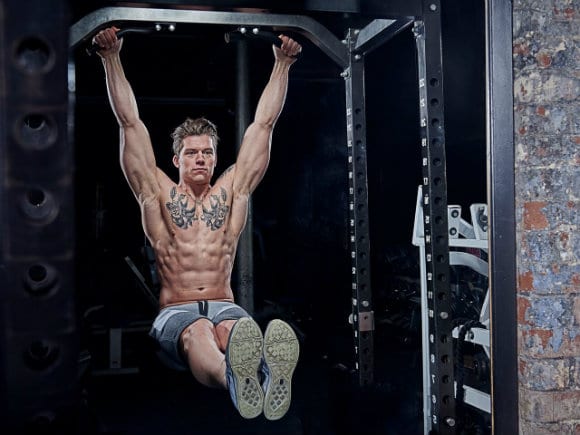By the healthiergang writer , certified personal trainer and athlete ().
BIIO: Method and Type of Training
The training method BIIO (Short, Intense, Infrequent, Organized) was introduced into the Body Building environment in 2001 with a book "The Science of Natural Body Building".
With the method BIIO it has practically entered the BB a training concept for achieving muscle hypertrophy completely different from that of the mold Weideriano, the "4 x 10”: That is to say the method of the classic cards of 4 sets of 10 repetitions to 5-6 exercises for each muscle group, to be repeated 3 times higher per week if beginners, increasing training sessions and workload up to 7 times a week at the most advanced level, all this generally indefinitely.
Obviously theuse of drugs (and a genetics out of the norm) has often been the only way that has made this kind of "classic" training compatible with the construction of an impressive muscle mass in a relatively short time, therefore for normal gym goers, even the most assiduous, with "normal" but natural genetic characteristics, all this may never happen; in the long run, such a training method can indeed lead to stalemate situations, when not to real injuries, even major ones.

It is worth quoting a few sentences of Stuart McRobert (which is, along with Claudio Tozzi, one of the main exponents of this training philosophy): “Traditional training methods are useless to most people and their promotion has greatly misled the masses of bodybuilders. Take a look around and you will see that in almost all gyms there are very few natural people with good physique. Also think about how many people did the gym for a certain period but gave up due to unsatisfactory results ”.
"Anyone or anything, anywhere in the world, promotes training routines that only work well for genetically gifted and / or drug-using athletes, or provides information on how to use drugs (or advertises some books on the same subject) or promotes absurd expectations and patterns or teaches high-risk or impractical training techniques [….] simply does not have your best interests at heart.
If you follow the "instructions" given by these sources you will walk the same path of frustration and despair already traveled by millions of people ".
The BIIO method therefore introduces a philosophy ed a working method conceptually different: let's see what they consist of.
What does BIIO mean?
It starts from 4 assumptions which constitute its foundation.
SHORT
The ideal duration of each session should not exceed 90 minutes (starting from a minimum of 40 45-minute): the explanation is given by the two fundamental hormones involved during training, testosterone and cortisol (the stress hormone): the first tends to drop after 45-50 minutes of activity, the second tends to rise considerably after 80 90-minute, and, if produced in excess, it promotes muscle catabolism (responsible for the demolition of the muscle).
INTENSE
If the training is actually to be short, it is only natural that it should include a limited number of exercises for each muscle group but very intense in terms of load.
INFREQUENT
From this derives the important concept, which exists among other things in all other sports, namely that of supercompensation or recovery, fundamental in muscle growth. This allows the body to rest and regenerate on a level neuro-muscular, to increase the power from time to time, because it practically implements a natural mechanism of muscular defense from the subsequent "attack" to its strength.
This means that rest becomes one fundamental component training itself: during a workload the energy necessary for the effort is exploited all during training and must therefore be regenerated; if this does not happen, that is to say if you resume your workouts without having given your body the necessary time to regenerate and compensate for fatigue, the muscle growth process will not only not improve but may even stop. So the workouts, according to the BIIO method, must be short, intense, infrequent. It will go by 3 times a week for beginners, a 2 for the next levels, up to even a 2-3 times in 15 days (even a 2 times higher in 1 month in advanced athletes): as we can see, the exact opposite of the traditional method.

ORGANIZED
It means that for the first time in the BB we have come to configure a scheme of rational training organized in cycles, which also includes a significant reduction in workload up to over 70%, with truly remarkable results (certainly slower since the load increases are almost imperceptible but continuous to avoid stalling) in terms of muscle development of athletes
Training BIIO
First of all the BIIO provides different training tables depending on the times of the year, in what follows some scientific principles that study the raising or lowering of hormone levels: according to these tables the months of October, November and December should be dedicated to the increase of force, since in these months the testosterone levels are maximum; the months from December to May, with the peak of cortisol, must consist of training brevi ma intense; from May and throughout the summer we will have to concentrate on mass, as it is the period in which the hormones anabolics (insulin, growth hormone, but also testosterone) reach their peak.
BIIO provides for a cycle of 2 settimane with 100% load intensity the first and 80% the second, followed by a third unloading at 20% of the work intensity. The loads used will be decreased only in the third week, so the loads of the second week must be greater (slightly) than those of the first. The decrease in intensity with increasing load (second week) is simply by INCREASING recovery between sets.
Example * "Olympian's News:
First week: flat bench press 3 x 8 with 100 kg, recovery between sets: 2 '(intensity 100%).
Second week: flat bench press 3 x 8 with 101 kg, recovery between sets: 2'30 "(intensity 80%)
Third week: 2 x 8 flat bench with 80 kg, recovery between sets: 3 '(intensity 20%).
La fourth week we start again trying to increase the load, even by very little (in this regard, Mc Robert will talk about microcarloads, or as he defines them, of small buds of 125, 250, 500 grams). In summary, one should always be able to increase the load, session after session; of course this will not always be possible (a BIIO cycle can also last 1 year, if necessary). This can happen anyway always and only when the maximum number of repetitions indicated for each exercise has been completed and, of course, when the execution technique has become perfect. Not before.

Very important, and often neglected in the BB, the inclusion of training cardio, which is recommended at least twice a week, especially for athletes over the age of 2, and especially at the end of the session.
The BIIO then lists a series of fundamental exercises to draw from:
pectoral: horizontal bench, parallel
Back: Deadlift with bent legs, Rower reverse grip, reverse side machine or bar pulls
Legs: Squat, press 45 °
Back: Slow forward, reverse bench
Tricepsi: Narrow bench
Biceps: Barbell Curl
Calves: Calf on his feet, Calf at the press
Abdomen: Cable crunch
These are referred to as a unlimited potential, as the load progression is almost infinite
To them you can then add some complementary exercises, or isolating a certain muscle group, which however are defined as a potential blocked, as they can never be performed with an unlimited load potential, but rather defined in their maximum limit, for all.
pectoral: High bench, bench crosses, cable crosses, chest machine, chest press, rear and forward lat machine, rowing machine with handlebars, low pulley, vertical row
Legs: Leg curl, leg extension, hack squat
Back: slow with dumbbells, side raises, shoulder press, 90 ° raises
Triceps: push down, dumbbell behind the head, french press
Biceps: dumbbell curl, scott bench, concentration curl
Calves: Calf seated
Abdomen: oblique to the ground, crunch
Series, Reps, Pauses, Speed of Execution
It will fluctuate between 1 and 3 series for each exercise, with repetitions ranging between 6 and 10 for the upper part, 12-20 for the lower part; the recovery must not be less than 1'30 "- 2 minutes, under penalty of inability to perform the next series perfectly, and can be increased up to 5 minutes as the intensity of the load increases; the execution speed should be about 2-3 seconds for the concentric (positive) phase, di 3-4 for the eccentric phase (negative). It will be good to rest (better too much than too little), with workouts spaced even 3-4 days.

The value of the pre heating WHERE and post cool-down WO is FUNDAMENTAL.
Below is one of the many examples of a training schedule, the one it provides 3 workouts per week (Schedule A): it could be a very heavy schedule if the workloads are important, so you may need a schedule that includes only 2 weekly workouts (Sheet B)
SHEET A
1
2 × 8 flat bench presses
Stretches with tight grip on 2 × 8 flat surfaces
2 × 6-8 parallel flexions
Overhead presses with 2 × 8 dumbbells
2 × 8 L-shaped openings
2
2 × 15 straight-legged deadlifts
Rematore to reverse prey 2 × 8
Lat machines or pull-ups 2 × 6-8
Biceps with 2 × 8 barbell
Crunch 2×10
3
Squat 2 × 15 o 1 × 20
Hurry 2×12
Calves 2 × 12
Bust push-ups 2 × 12
SHEET B
1
Bench press 2 × 6-8
2 × 6-8 parallel flexions
Overhead presses with 2 × 8 dumbbells
Close Grip Bench Press 2 × 6-8
Crunch 3×15
2
Squat 2 × 15 o 1 × 20
2 × 15 straight-legged deadlifts
Rematore to reverse prey 2 × 8
Pull-ups 2 × 6-8
Calves 2 × 15
GOOD WORKOUT!


























